List of Authors
>>About this blog
Recent blog post
|
[Taro Edo]
Nov. 28, 2014 18:00
Chuo-ku is held twice a year in spring and autumn.
1 Business name: Hard tennis classroom
By the way, the schedule is from April 11 to May 20 in the spring of 2014, and from September 9 to October 17 in the fall on Tuesday and Friday from September 9 to October 17.
2015 is undecided.
2 times: 10 times in total In principle, Tuesday and Friday
3 hours: From 6:30 pm to 8:30 pm
4 Venue: The school grounds of Kyobashi and Tsukiji Elementary School
5 Lesson fee: 2,500 yen in total 10 times
6 Targets :18 years old or older
7 Capacity :60 people
Details will be published in the ward's news [central] March 1 and August 1.
I was also invited to participate in a hard tennis class for the first time.
There are A class for those who have first divided into classes and have never played tennis at all, B class for those who have played a little tennis, and C class for senior who have graduated from A class.
In each class, 3 to 5 coaches can be taught kindly and politely, so it is safe for beginners.
Occasionally, after the hard tennis class ends, there is also a social gathering, where you can make friends and it is a very fun classroom.
If you want to start playing tennis, why don't you join us?
[Sam]
Nov. 28, 2014 09:00
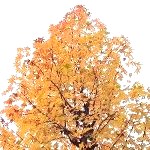 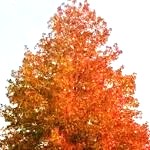 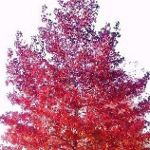
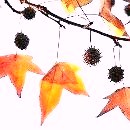 In late November, the cold weather became even more severe, and it was as cold as Shiwasu. In late November, the cold weather became even more severe, and it was as cold as Shiwasu.
Finally the end of autumn.
The rows of ginkgo trees on the Akashicho Green Road are completely colored yellow and are at their best.
By the way, on November 25, the Tokyo region "Ginkgo Yellow Leaves", one of the Japan Meteorological Agency's plant seasonal observation information, was announced.
It is said that it is five days later than normal and one day later than the previous year.
This time, we picked up the autumn leaves of "Momijibafu (also known as U.S. Fu)," which is also planted along the Akashicho Green Road.
A deciduous Takagi of the family Asteraceae, native to North America, Central and South America.
The bark is brownish, shallow and longitudinal. The flowering season is around April.
Fu is written as maple and leaves are also palm-shaped, alternate, with a collection of fruits (spherical shape) hanging, while the leaves of maple (collectively term for the maple family maple) are opposite and have a propeller-shaped wing fruit.
It is a neat tree shape and has a variety of autumn leaves, from green to yellow to yellow to orange to red, so it can be parabled as "seven colors of autumn leaves" and gorgeous.
The fruit of "Iga" with a long handle that remains on the branches after falling leaves is also impressive.
[Sumida Fireworks]
Nov. 25, 2014 18:00
Ginkgo from all over Tokyo is gradually changing color.
So when I took a walk, I went to see how the ginkgo, the sacred tree of Tsukiji's Namiwa Inari Shrine (on the evening of November 22, 2014).
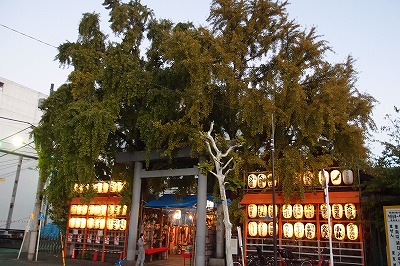 Oh, it's going to take a little longer. Oh, it's going to take a little longer.
The ginkgo at this shrine is a type called "weeping ginkgo", which is literally weeping ginkgo, but I think it is an unusual type.
I visited a shrine for the first time last year, and my heart was moved by the branches.
The photo below is a photo of my visit on the night of December 7, last year.
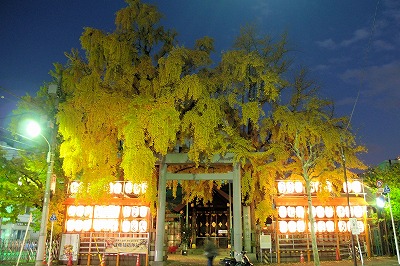 The yellow leaves of the weeping ginkgo, illuminated by streetlights and lanterns, looked like a bell-grown oval. The yellow leaves of the weeping ginkgo, illuminated by streetlights and lanterns, looked like a bell-grown oval.
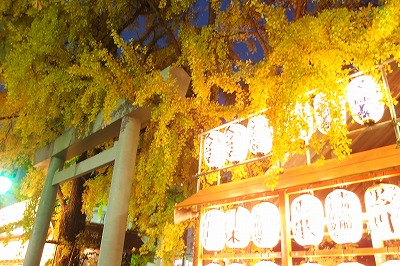
The way of coloring seems to be different every year, but I hope that this year will be colored like last year.
On November 22, I went to see this time, "Rooster Market" happened to be held on the precincts.
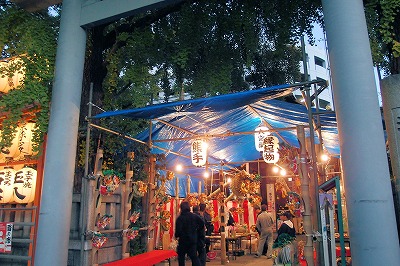 It was not large, but it was crowded with small crowds. It was not large, but it was crowded with small crowds.
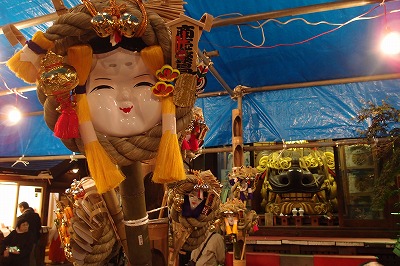
Tsukiji Market will be busy until the end of the year.
When you visit the market, be sure to pay attention to the ginkgo at Namishi Inari Shrine.
1.
Nov. 21, 2014 09:00
Last year, "Japanese food" was registered in UNESCO's Intangible Cultural Property, and combined with health consciousness, it became a global "Japanese food" boom. November is said to be "Japanese Food Month" recommended by the Ministry of Agriculture, Forestry and Fisheries, the 15th is "Konbu Day" and November 24th is "Inihonshoku" Japanese food day. That's why I visited Fujiki of Kaiseki cuisine It's right next to Mr. Honganji. I was guided to a private room with a digging gotatsu style. Would it be good for lunch? This style of stretching legs is nice for those who have become a little difficult to sit straight. I was so happy that I decided to have a beer with my friend. The first thing that came out was the assortment of sashimi. Rich that I don't think it's a lunch box sashimi. Did you make a mistake in the course? I'm a little worried. (Because I'm too small)
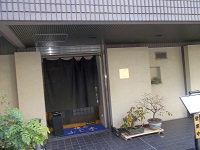 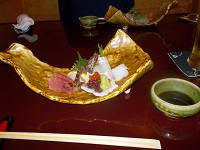
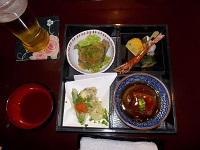 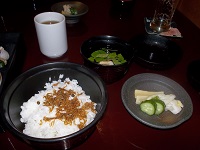
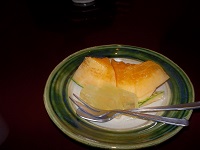 Below are lunch boxes, rice, desserts, and one after another. Satisfaction and satisfaction. Below are lunch boxes, rice, desserts, and one after another. Satisfaction and satisfaction.
This is 2600 yen (tax included). Autumn is getting deeper. It's a perfect shop for women's associations.
Lunch is from 11:30 to 14:00 Lunch kaiseki lunch box is 3600 yen, lunch kaiseki course is 5200 yen and 8300 yen. Night is closed from 17:30 to 22:00.
Kaiseki Fujiki Tsukiji 7-4-4 Sun Crest Tsukiji 1st floor
TEL6228-4860
[Shitamachi Tom]
Nov. 20, 2014 09:00
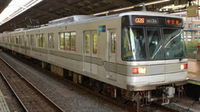 Chuo-ku is a convenient area with a well-developed transportation network. In public transportation, JR, subways, metropolitan buses, community buses, etc. run vertically and horizontally. The familiar thing may be the "Ginza Line" that passes through Ginza and Nihonbashi, but the other thing that you must not forget on the subway line is the "Hibiya Line". There are seven stations in the ward that exceed the Ginza Line, and it is an important route not only for residents but also for many customers. Chuo-ku is a convenient area with a well-developed transportation network. In public transportation, JR, subways, metropolitan buses, community buses, etc. run vertically and horizontally. The familiar thing may be the "Ginza Line" that passes through Ginza and Nihonbashi, but the other thing that you must not forget on the subway line is the "Hibiya Line". There are seven stations in the ward that exceed the Ginza Line, and it is an important route not only for residents but also for many customers.
The Hibiya Line was planned at an early stage to enhance the convenience of transportation in Tokyo, and was built from the beginning on the premise of mutual direct access to private railways. After partially opening in 1961 (Showa 36), construction was rushed in time for the previous Tokyo Olympics, and in 1964 (Showa 39), the entire line was opened. This year marks the 50th anniversary of this year. Indeed, it can be said that it is a railway line that was born and nurtured along with the history of the development of Japan and Tokyo after the war. Among the railway lines, the most presence is the stations in Chuo-ku. It runs frequently in small areas and is also useful as a foot for flow in the area.

For a long time on the Hibiya Line, silver vehicles with a humorous face of the 3000 series have been popular. The cover of the commemorative pamphlet distributed at Tokyo Metro is also displayed. After all, it was the first "semi-stainless vehicle" adopted by the subway at that time. For the first time, ATC (automatic train control device) was installed to improve safety. I think it was a revolutionary famous car, including its design.
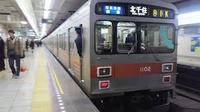 Since then, a vehicle wearing a silver belt called the 03 series is now running. There are also vehicles from the Tobu Railway, which is mutually accessible. Until last year, we had been interacting with the Tokyu Line, so we sometimes saw Tokyu Car Corporation, but it has disappeared and I feel a little lonely. Tokyo Metro and Tobu have announced plans to launch new vehicles in fiscal 2016. It is said that the current 18m8 formations will be unified to 20m7 formations by 2019, and home doors will be developed. More and more interest in the evolving Hibiya Line. Since then, a vehicle wearing a silver belt called the 03 series is now running. There are also vehicles from the Tobu Railway, which is mutually accessible. Until last year, we had been interacting with the Tokyu Line, so we sometimes saw Tokyu Car Corporation, but it has disappeared and I feel a little lonely. Tokyo Metro and Tobu have announced plans to launch new vehicles in fiscal 2016. It is said that the current 18m8 formations will be unified to 20m7 formations by 2019, and home doors will be developed. More and more interest in the evolving Hibiya Line.
The Hibiya Line does not run very deep because the construction method of excavating roads from the ground at that time was adopted. Because of that, there are sharp curves here and there to basically run under the road. The creaking sound as you pass through the curve from the vent on the ground may be heard. Somehow it's a familiar train. Please use the Hibiya Line when working, shopping, or strolling in Chuo-ku. You can visit various towns.
[Dimini ☆ Cricket]
Nov. 19, 2014 09:00
Kachidokibashi, which connects the Tsukiji area of Chuo-ku and the Kachidoki area, is a nationally designated important cultural property.
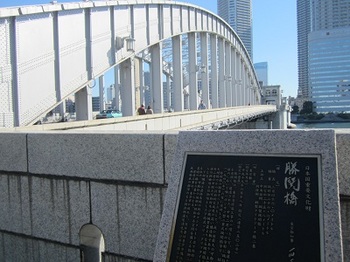
This bridge is a Futaba jumping bridge completed in 1940, and the center of the bridge jumps up, and the substation provided on the Tsukiji side is now the Kachidokibashi Museum. Has become
In front of the museum, there is also a stone monument of "Kachidoki no Ishi". This "handing" was established in 1905, and the name "Kachidoki" is said to be due to the fall of Port Arthur in the Russo-Japanese War.
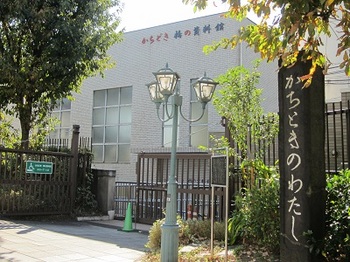
On the wall of the museum, there is a panel of "Kachidokibashi Substation" that gives you a sense of history.
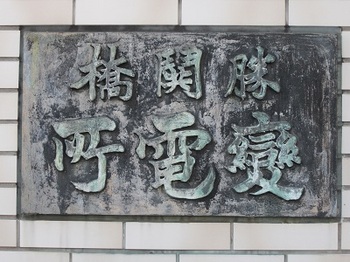
On the first floor of the museum, a generator that operated Kachidokibashi is preserved and displayed as it was at that time.
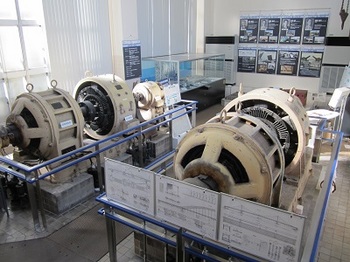
When you go up the stairs, you can see the distribution board of electrical equipment on the second floor.
When I entered the building, I smelled the oil faintly and asked the receptionist, "Do you still put the oil on the machine?" Does the answer "I don't mind" mean the remaining incense at the substations?
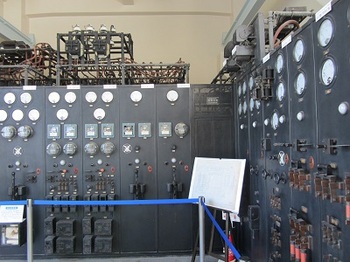
The museum is open from 9:30 to 16:30.
Closed days are days, months and Wednesday, and admission is free.
There is also a tour where you can see the pier.
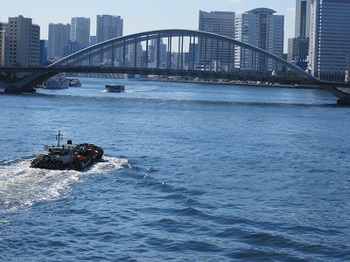
By the way, the photo above  is Tsukiji Ohashi, the newest bridge seen from Kachidokibashi. is Tsukiji Ohashi, the newest bridge seen from Kachidokibashi.
http://www.kensetsu.metro.tokyo.jp/kachidoki/ (http://www.kensetsu.metro.tokyo.jp/index.html)
|
Links
|




 Oh, it's going to take a little longer.
Oh, it's going to take a little longer. The yellow leaves of the weeping ginkgo, illuminated by streetlights and lanterns, looked like a bell-grown oval.
The yellow leaves of the weeping ginkgo, illuminated by streetlights and lanterns, looked like a bell-grown oval.
 It was not large, but it was crowded with small crowds.
It was not large, but it was crowded with small crowds.















